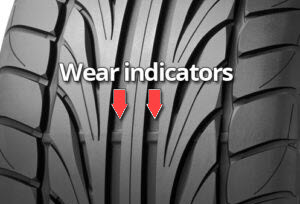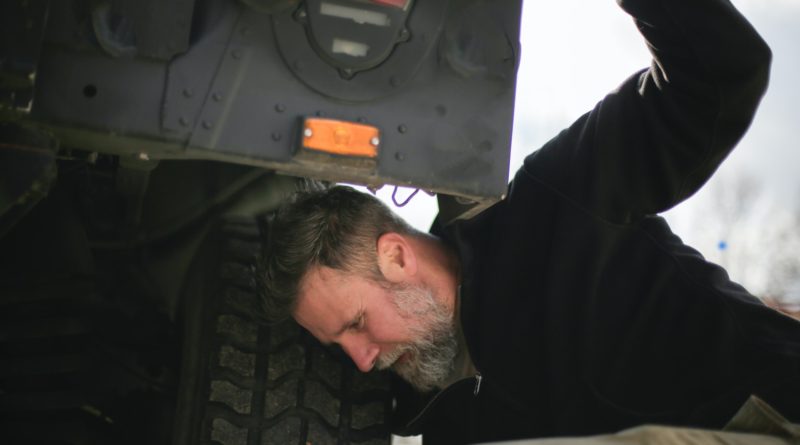Signs a Car Needs New Tyres & How to Check
Needing new car tyres is something all vehicles go through in their time. When, how often and how necessary each tyre change is, however, is where things aren’t so clear. Whether you’re checking the life on your own tyres or even looking at the tyres on a car you’re about the buy, checking the state of tyres and signs to look for is essential to safety when driving. It’s not something you can get away with, and it all comes down to that government mandatory 1.6mm tread. We advise 5mm to be left when buying a used car as its 50% of tyre life left or in simple words 2 years of driving with average mileage 10.000 miles a year.
Despite how vital it is to keep your tyres in a safe state and give them the upkeep that they require, many people still just aren’t quite sure about doing it. It always feels like a subject matter that has a lot of leeway depending on who you ask, but in reality, there’s a fine line between a tyre that’s legal and a tyre that isn’t, and it can cost you your life as well as your money.
To help you stay on the ball with your own tyres and how to really get the full picture when you’re looking at any other tyres, for that matter, it’s a good idea to learn the signs that you need to change your tyres, and the finer points of testing tyres too.
Tyre Warning Signs
A great place to start is with the key points you need to keep an eye out for. There are some things that really stand out from the crowd that can tell you that you need to take action. All of them are essential to look out for.
Tread
The most common thing to look at is the tread your tyres have on them. This is a fundamental aspect of tyres. Your tyres need enough tread on them to have the grip that you need to stay safe on the road. The more grip you have left on your tyres the longer they will last you before you need to change them. If a tyre is looking particularly bald, you know that your time’s up. Get them checked and changed.
Cracks
The grip on your tyres isn’t the only vital sign to remember with you’re looking at your tyres, and that’s even more essential when you’re looking at an older car or a car that has been left standing a while. Cracks in the rubber are a strong sign that you tyre has been through some stress and isn’t up to scratch either. It means the rubber is beginning to lose its form and dry out, making it unfit for purpose, even with enough grip.
Age & Mileage
Even less visible signs you need new tyres are still signs none the less, and when you have all of the information that you need whether it’s from memory or from a seller, you can really do some digging and find more holes in the tyre health too. An effective sign that you may well need new tyres no matter what state they are in actually comes from the age of the ones you have. Even with light use city driving and minimal mileage, your tyres will still degrade over time. Count the age as well as the mileage, and if you have hit 10k miles or the 10 years mark on the same tyres, you definitely need to get them checked out.
Bulges and Holes
Lastly, a massive sign that you need new tyres on your car is that you may well begin to find issues in the tyre shape and integrity. Even aside from all of the other points, it’s not uncommon to find bumps, bulges and holes in any tyre, especially when driving on poor quality surfaces. This all has a massive impact on tyre health and will likely mean you need to get them changed ASAP.
How to Check Your Tyres

If you have seen some of the signs that new tyres are on the horizon and you want to ally put them to the test to see the results, you can actually check your tyres at home a lot of the time to help spot the issues. You just need to know how to do it in a reliable way. You need to have the all-important 1.6mm minimum tyre tread on your tyre’s circumference after all
The Correct Test
In a perfect world, you will have the car in questions tyres checked by a pro. A vehicle inspector, mechanic or even you with the right tool like a tyre thickness gauge is perfect. Get the right tools for the job and you will get a reliable and accurate reading whenever you need one, and that can make all the difference. It’s hard to beat.
The Coin Test
An alternative and much more accessible way is to use a coin. Ideally, this is a 20 pence piece, as it has the perfect shape and sizes to get this done. You place the coin in the shallowest part of your tyres grip and see what it still visible. If you can’t see the outer edge of the coin, you’re probably okay for grip. If you can see the edge, you need to refer to test one, or get them changed. It’s not worth risking.
The Kick Test
As for testing other aspects of the tyres aside from grip, it can also be a good idea to give the tyres some external force. Rubbing and kicking tyres (sensibly) can be a great way to check for easily formed cracks and structural issues. These are just as bad after all and looks can be deceiving. Don’t get caught out.
Ultimately, no one knows better than the pros. If you are in doubt, then there is probably a good reason for it. Tyres are not cheap, so whether you buy new or part worn on a new car or your trusty vehicle, get it done. Safety is paramount, and you can’t risk your life.
Buying a used VW. Buying used vauxhall, BMW, Jaguar, Ford, Volvo, Range rover, Bentley, Aston Martin, Porsche, Ferrari, Lamborghini, Maserati, Hyundai, Tesla, Honda, Pagani
Happy Driving!

